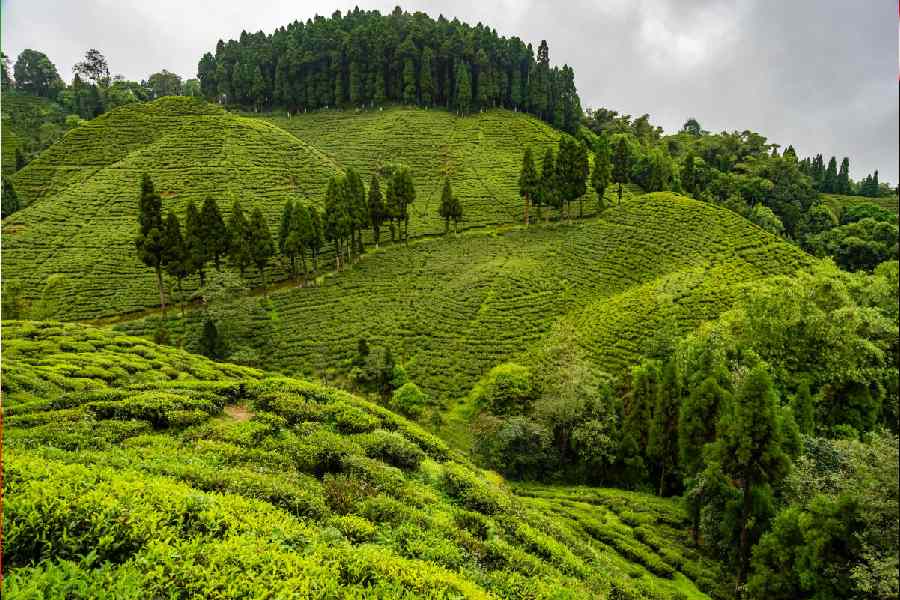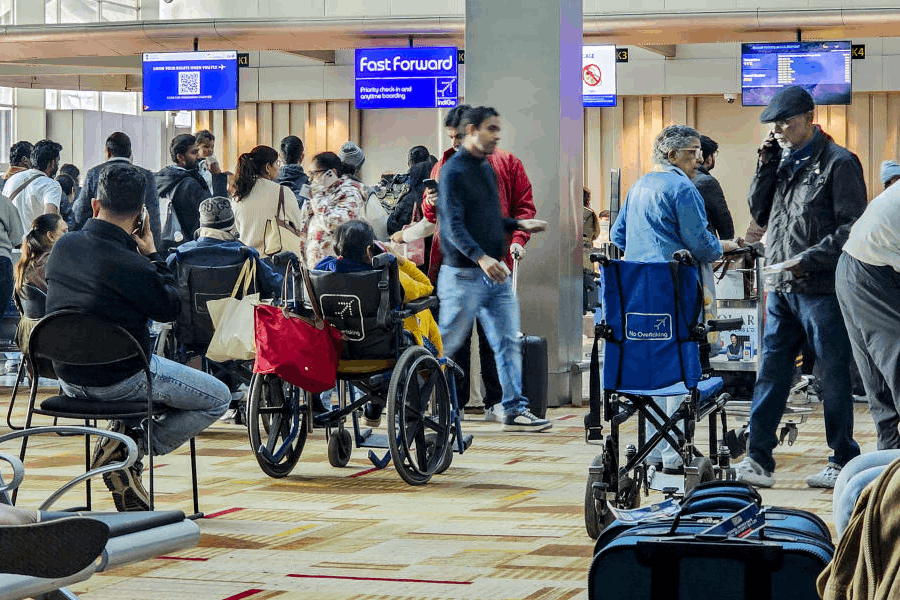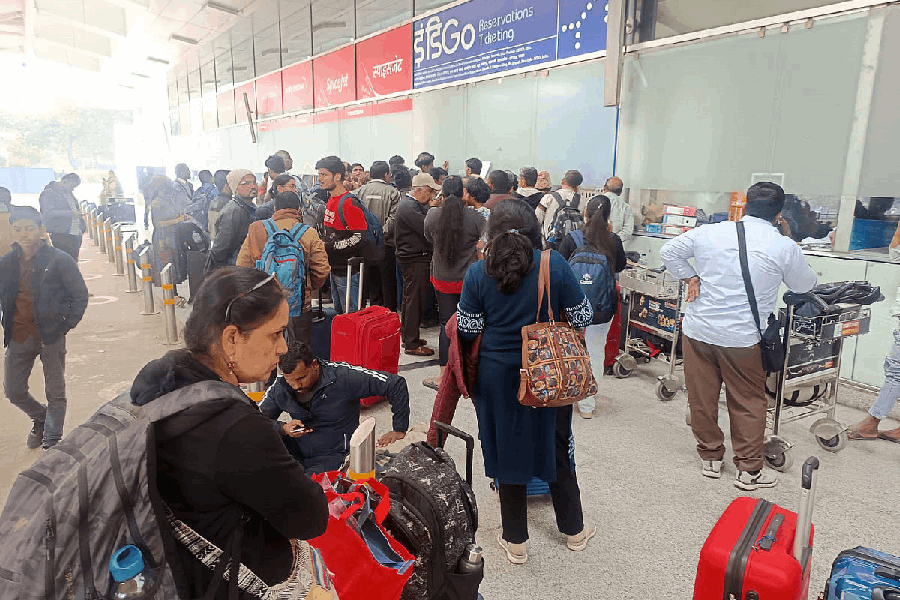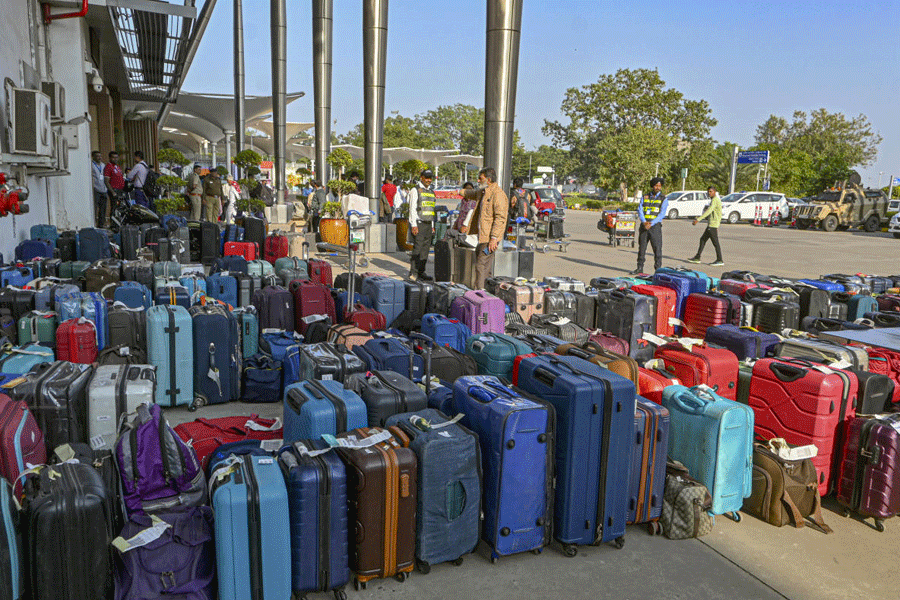Darjeeling’s iconic golden amber liquor, considered the champagne of teas, is fighting against time from turning bitter.
The delicate elixir — swirling with notes of muscatel and honey, and whispers of mountain air — is facing unprecedented challenges from multiple directions that imperil its production, quality and global reputation.
In 2024, the industry recorded its lowest-ever yield at 5.6 million kilograms of tea, a sharp decline from the peak annual production of 14 million kilograms in the 1970s and 1980s.
“It is time for all stakeholders — the government, industry leaders and workers’ representatives — to come together and draft a clear vision. Otherwise, it is only a matter of time before the cherished flavour of Darjeeling tea is lost,” warned an industry veteran who did not want to be identified.
For a struggling sector that is burdened with a cup of woes, finding the delicate balance is turning out to be frustratingly elusive.
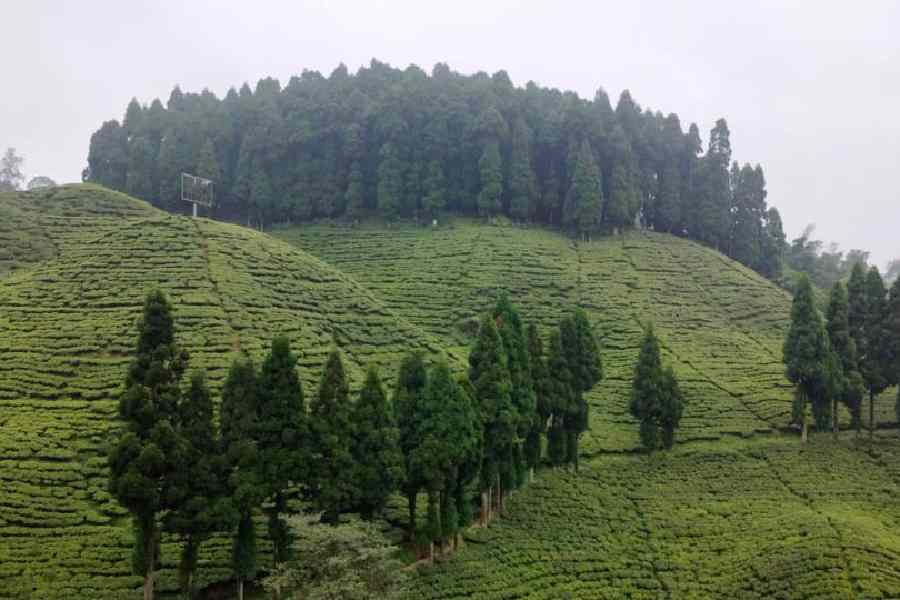
A view of Gopaldhara Tea Garden, Darjeeling. Photo by Passang Yolmo
Absenteeism
At the heart of the industry’s trouble is rising absenteeism, which has drastically impacted tea production. Darjeeling’s gardens have 70,000 workers on their rolls but the absenteeism is between 40 and 60 per cent.
“During eight months of plucking, a garden would normally complete 25 to 30 rounds. Due to absenteeism, this has come down to 16 to 18 rounds of plucking,” a planter told The Telegraph.
The educated younger generations are unwilling to work as labourers and are looking for green pastures away from the garden.
“Such is the situation that the average worker’s age has jumped from 38 to 47,” said another planter. An ageing workforce has hit productivity.
To counter absenteeism, some tea gardens have started hiring workers from outside Darjeeling. “There was resistance from the locals,” said a tea garden manager.
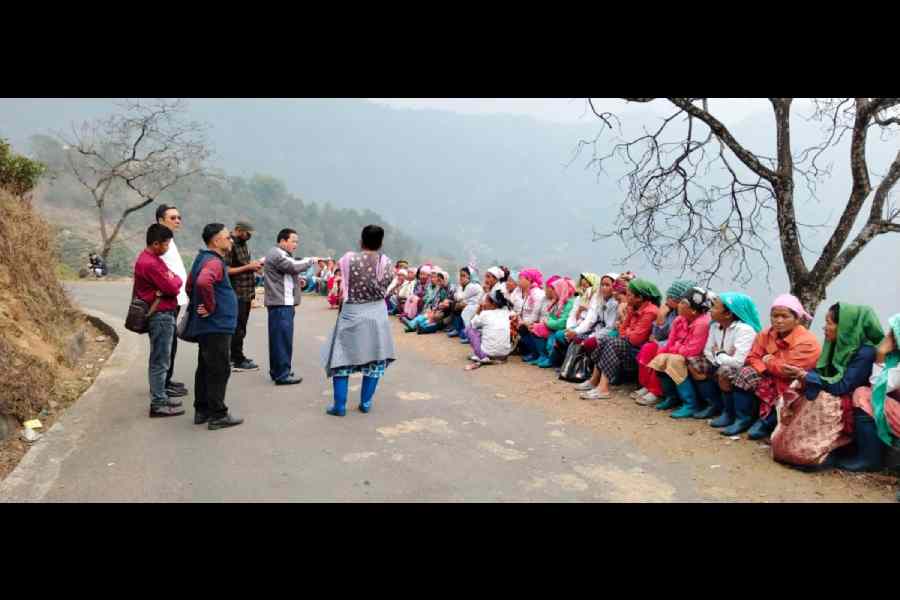
Leaders of the Joint Forum, a platform of over 20 tea unions, addressing workers at Rohini Tea Garden. Photograph by Passang Yolmo
The management then asked the local leaders to organise local workers for the estate. “They could not get any. So, they stopped objecting to hiring workers from beyond the hills,” the manager added.
These migrant workers are brought over by labour contractors. “We do not pay daily wages, provident fund or other statutory benefits. A lump sum is agreed upon and they work for extended periods of time to complete the task,” the official added.
Labourers from outside Darjeeling stay during the plucking season and then leave for the plains.
“Productivity has improved by engaging them,” the manager added.
However, finding a large number of such workers willing to work in the cold mountainous terrain is also not an easy task.

A view of Gopaldhara Tea Garden, Darjeeling. Photo by Passang Yolmo
Many planters are talking about adopting mechanisation to improve efficiency. But Darjeeling tea requires delicate and fine plucking or else the quality could suffer, and that is why using machines comes with its own perils.
“The other aspect is that workers should also be mentally prepared to adapt to new technology,” said another planter.
Wage conflict
With absenteeism hitting production, conflicts over wages are on the rise. If 2024 recorded an all-time low yield, the 2025 harvest season started with a call from a section of the political leadership to stop plucking of premier first flush unless the workers’ issues are addressed.
The leadership is demanding that the industry agree to a 20 per cent bonus for the 2024-25 season and they firmly believe that the management is most vulnerable during first flush plucking.
The prized first flush is the batch of the youngest, most tender leaves harvested after winter’s dormancy. Even though this flush contributes to around 20 per cent of the total tea production, it makes up about 40 per cent of the industry’s revenue — the annual turnover is estimated at ₹400 to ₹500 crore.
First flush plucking has started and will continue till mid-April. The others with diminishing qualities are second, monsoon and autumn flushes.
Following the boycott call, two Darjeeling gardens have “withdrawn” their management after workers refused to attend work. Of the 87 gardens within the Darjeeling tea industry, 10 gardens have remained closed for more than a year.
A planter lamented: “The Darjeeling industry is on a slide and instead of
helping open closed gardens, a section of the leadership is pushing the industry to the brink of collapse by issuing such boycott calls.”
Union leaders, however, argue that with daily wages at just ₹250, workers deserve a 20 per cent annual bonus, especially before Dashain (Dussehra), their biggest festival.
While negotiations over bonuses traditionally take place before Durga Puja, some leaders are pushing for a shift in timing this year.
According to regulations, the minimum bonus that a management needs to pay is 8.33 per cent with a ceiling of 20 per cent.
The industry, which has not yet been able to fix a minimum wage, stated that it was a misnomer to state that workers are only paid ₹250 per day. “The cost to company is between ₹405 and ₹415 per worker per day, given statutory obligations like provident fund, gratuity, housing, etc.,” countered a planter.
Another planter said, “Bonus is paid depending on the health of the company. The industry is bleeding since the 2017 Gorkhaland agitation.”
Indeed, 2017 is considered a watershed year by the Darjeeling industry as the hills were closed for 104 days at a stretch.
With disruption in supply, Nepal tea entered the market which was earlier dominated by Darjeeling.
From that year, Nepal tea started replacing Darjeeling tea both in the domestic and international markets. Darjeeling is contiguous with the tea-growing areas of eastern Nepal. Several million kilograms of tea are imported from Nepal annually.
“Out of 16 million kilogram of tea imported from Nepal to India annually, about 5-6 million kilograms is of the orthodox variety that resembles the Darjeeling orthodox tea growing in the 87 tea estates in Darjeeling,” said a planter.
India does not impose any import duty on Nepal tea.
Data suggests that export of Darjeeling tea has come down from 4.5 million kilograms in 2021 to around 3 million kilograms in 2024.
Land policy
The Darjeeling industry is restive after the West Bengal government recently decided to allow non-tea activities in 30 per cent of fallow and unused tea garden land from an earlier ceiling of 15 per cent.
The issue gained traction as workers are demanding that they, too, should be given land rights over the entire land under their possession. The government had earlier stated that it would provide five decimals of land to the workers. One decimal equals 435.6 square feet.
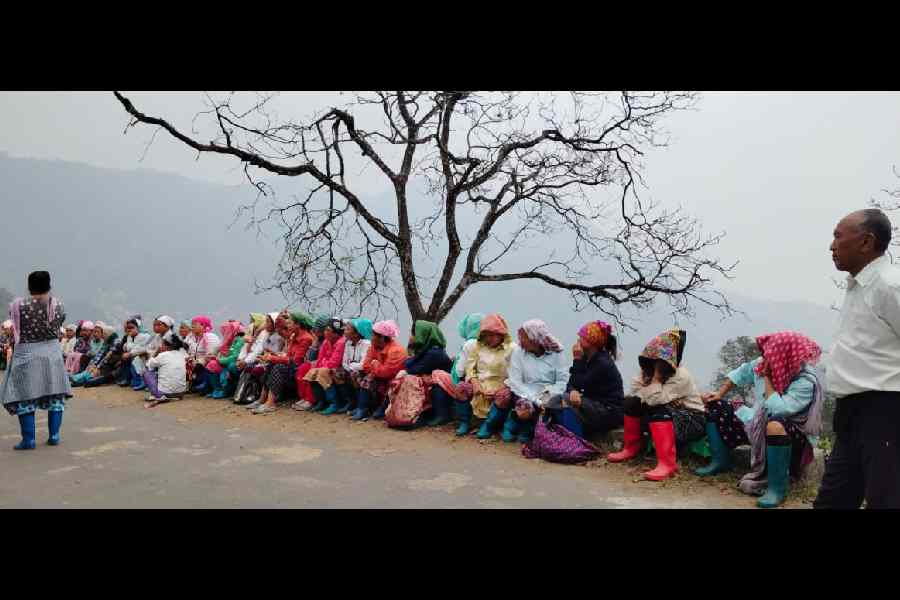
Leaders of the Joint Forum, a platform of over 20 tea unions, addressing workers at Rohini Tea Garden. Photograph by Passang Yolmo
Land is a sensitive issue in Darjeeling and workers have been living in the gardens for generations without land rights.
While the state government’s decision is avowedly to help revive the tea industry, not many in Darjeeling are convinced by the idea.
“The tea policy has been framed keeping in mind the entire tea growing areas of Bengal. In Darjeeling where is the 30 per cent of fallow land?” wondered a planter.
Many planters have started tea tourism to apparently boost their income.
“But tea tourism is not generating the expected returns. The only time they did good business was a year after the Covid pandemic,” said an insider.
Some fear that there could be an overkill in the tea tourism sector.
“Gardens that are near towns in the hills might benefit but not the rest,” added another planter.
Tea veterans also maintain that such a policy would not save the Darjeeling tea industry.
As Darjeeling tea navigates through a challenging phase, stakeholders are a worried lot.
A planter, who feared that the government might dictate an increase in wages just before the Bengal Assembly elections next year, told The Telegraph, “The focus should be on saving tea and for this the government should stop taking political decisions for the industry.”

